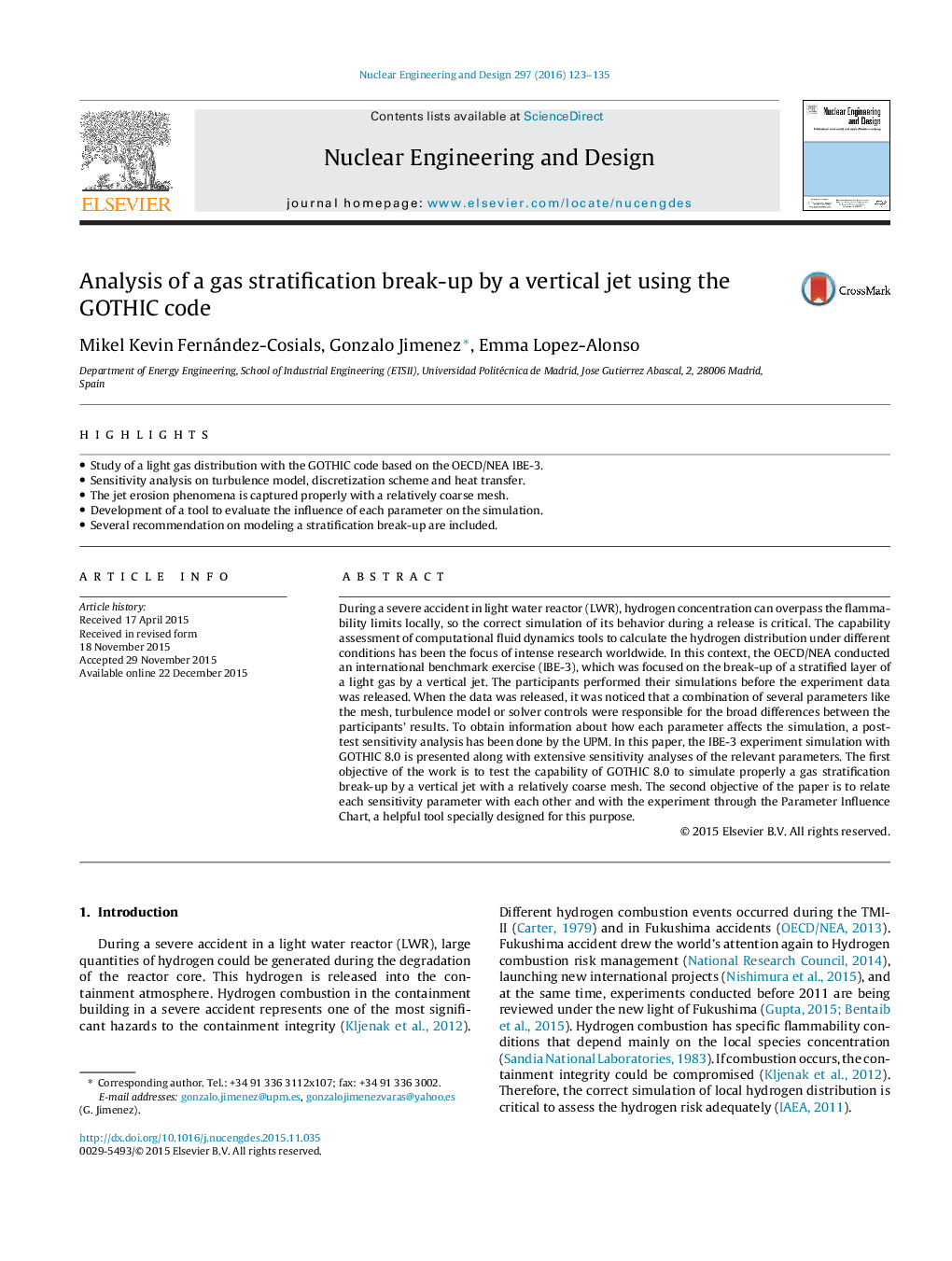| Article ID | Journal | Published Year | Pages | File Type |
|---|---|---|---|---|
| 296065 | Nuclear Engineering and Design | 2016 | 13 Pages |
•Study of a light gas distribution with the GOTHIC code based on the OECD/NEA IBE-3.•Sensitivity analysis on turbulence model, discretization scheme and heat transfer.•The jet erosion phenomena is captured properly with a relatively coarse mesh.•Development of a tool to evaluate the influence of each parameter on the simulation.•Several recommendation on modeling a stratification break-up are included.
During a severe accident in light water reactor (LWR), hydrogen concentration can overpass the flammability limits locally, so the correct simulation of its behavior during a release is critical. The capability assessment of computational fluid dynamics tools to calculate the hydrogen distribution under different conditions has been the focus of intense research worldwide. In this context, the OECD/NEA conducted an international benchmark exercise (IBE-3), which was focused on the break-up of a stratified layer of a light gas by a vertical jet. The participants performed their simulations before the experiment data was released. When the data was released, it was noticed that a combination of several parameters like the mesh, turbulence model or solver controls were responsible for the broad differences between the participants’ results. To obtain information about how each parameter affects the simulation, a post-test sensitivity analysis has been done by the UPM. In this paper, the IBE-3 experiment simulation with GOTHIC 8.0 is presented along with extensive sensitivity analyses of the relevant parameters. The first objective of the work is to test the capability of GOTHIC 8.0 to simulate properly a gas stratification break-up by a vertical jet with a relatively coarse mesh. The second objective of the paper is to relate each sensitivity parameter with each other and with the experiment through the Parameter Influence Chart, a helpful tool specially designed for this purpose.
